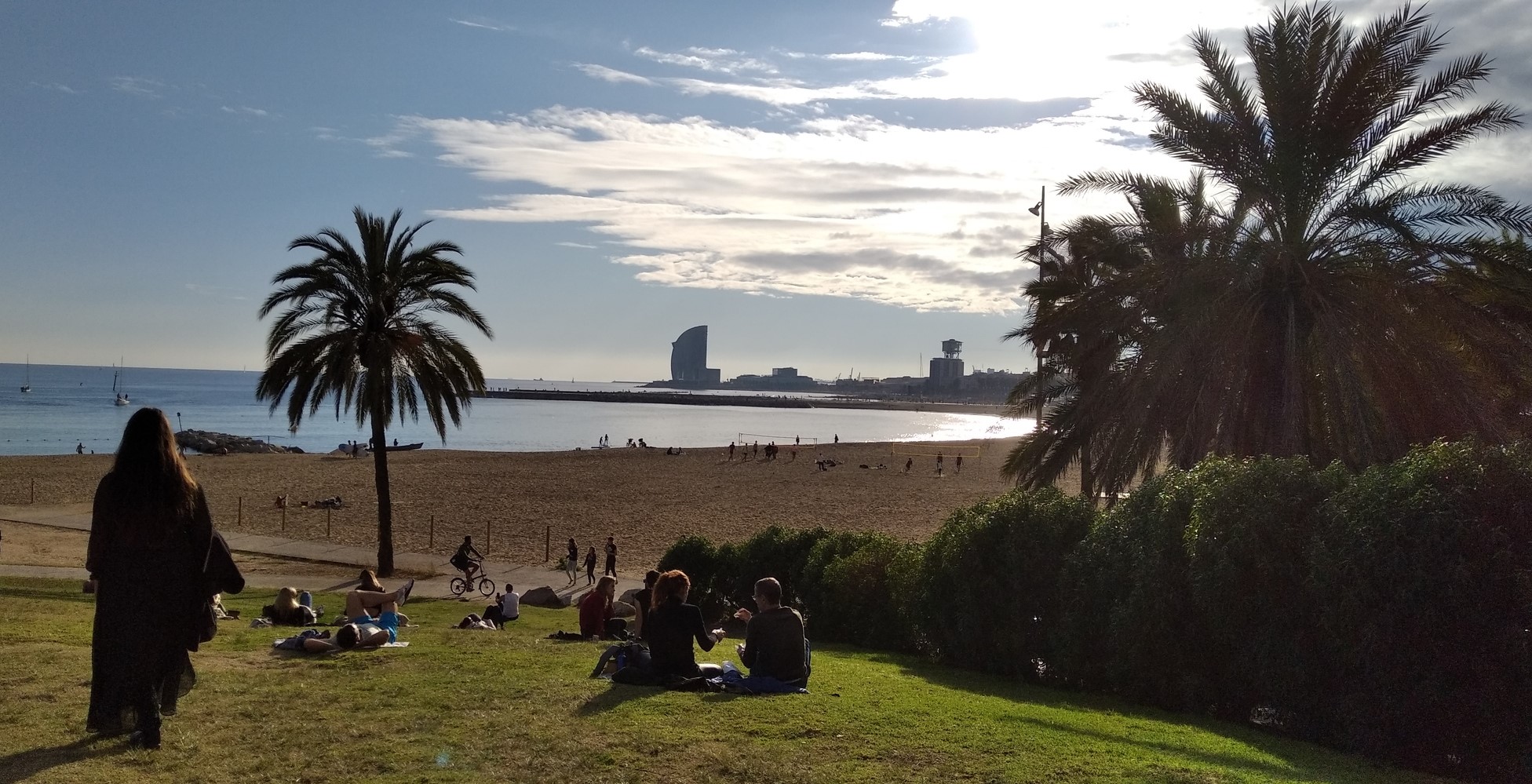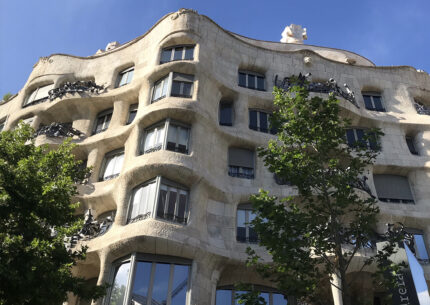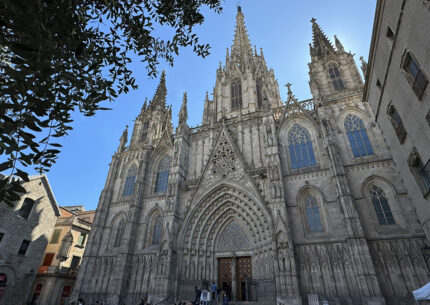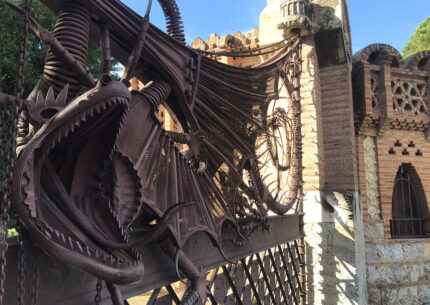
BARCELONA SEAFRONT TOUR FOR “LA MARATÓ DE TV3”
Barcelona seafront tour for “la marató de tv3” Thanks to you who signed up for the guided tours in Barcelona, to support the yearly Marató de TV3, we collected more than 3,600 Euros in one day! A hundred volunteer licensed guides made all this possible along Catalonia, organizing 50 tours in 6 towns simultaneously.
It was a great day, and we are proud to have contributed to this initiative by guiding you and narrating the History of Pandemics and Epidemics in Barcelona.
Do you want to know how we did it? Take a look at the tour!
The starting point: Barcelona’s Olympic Port
The small group tour started right after greeting the eight participants. We began walking along the sea promenade, towards La Barceloneta neighborhood.
We stopped over at a number of venues of historical significance to introduce the group members to Barcelona’s history of epidemics and pandemics from the Middle Ages to our days.
Until well into the 20th century Barcelona experienced all sorts of pandemics:
– Black Plague
The 1348 Black plague killed more than 60% of its population. The plague struck the city multiple times in the following centuries and ravaged it harshly again in 1651.
War was a frequent occurrence and caused the spreading of many sicknesses. Moreover, as a seaport, Barcelona was constantly exposed to infectious diseases from distant lands. Especially in the 19th century, the city was overpopulated. It kept growing faster and faster because of its industrial expansion, but for most of the 1800s was forced to remain confined within its medieval walls by royal order.

– Yellow Fever
Sanitary conditions in Barcelona were appalling and malnourishment was quite common among the very ill paid working class families. Not surprisingly, the 1821 yellow fever had a terrible impact, killing 9,000 of its (then) 150,000 population. Cholera and typhus struck the city repeatedly in the 19th and 20th centuries.
– Spanish Flu
One of the deadliest pandemics ever, the 1918 Spanish flu, was not the last infective disease to claim the life of a sizeable amount of Barcelona’s population in the 20th century.
Curing infectious diseases across the ages
Medical science and technology were far less advanced one century ago than they are now. Healthcare was quite different too. Until the very end of the 19th century, those who contracted infectious diseases were confined in lazarettos, places conceived mainly for quarantine and not so much for actual treatment.
One such place existed between the 17th and 19th centuries in the Poble Nou, a seaside neighborhood not far from the Olympic Village. In those times it was a marshy area, sparsely populated and relatively far from the city of Barcelona.
In 2020, Covid-19 has been a sad experience for many and sadder still for those who have lost some family member or a friend. That is why La Marató de TV3 was dedicated to collect money for the research of the virus and the vaccine.

Hospital del Mar
It was only in the early 20th century when Barcelona finally had its first hospital for infectious diseases. The institution still exists and is located along the tour’s itinerary.
We stopped over next to it with the group, in order to talk about its history. It is now called Hospital del Mar, a modern General Hospital and a Research Center facing the Mediterranean Sea.
The hospital has changed a lot and the surrounding environment too! Formerly, it was surrounded by factories and the Somorrostro shanty. The very hospital compound was built next to a coal gasification plant, opened in 1843.
How different it all was in those times, compared with the blue ocean views we enjoyed throughout the tour and the beautiful beach just across the street! In fact, we like Barcelona’s seafront so much that our amazing city bike tour also covers this area.

The tour ended at La Barceloneta neighborhood, traditionally devoted to seafaring activities and heavily industrialized in the 19th century.
Today factories have disappeared and La Barceloneta is now a very enjoyable place, with a lot of local life, tapas bars, nice squares and cafés.
After the tour, the group and the guide chose to stay on in La Barceloneta, socializing a little and having some drinks and food at a tapas restaurant. Thanks to the mild local weather, we could sit at an outside table, on a corner of La Barceloneta’s busy market square.
See you next time!
At UNISON ROUTES, we believe that it is fun to explore Barcelona with our tours focused on ancient and modern history! It may not help us to see into the future, but it certainly offers useful insights and allows one to observe reality from another perspective.
Barcelona seafront tour for “la marató de tv3” You were unable to join us on this cool tour during La Marató de TV3, but wish you had?
Contact us and we will arrange a tailor-made tour for you, your family and friends!




I joined this tour with Francesco and it was fantastic
I liked the tour with Francesco and learned a lot about the history of pandemics in Barcelona
The tour was super cool and I enjoyed the Batceloneta a lot